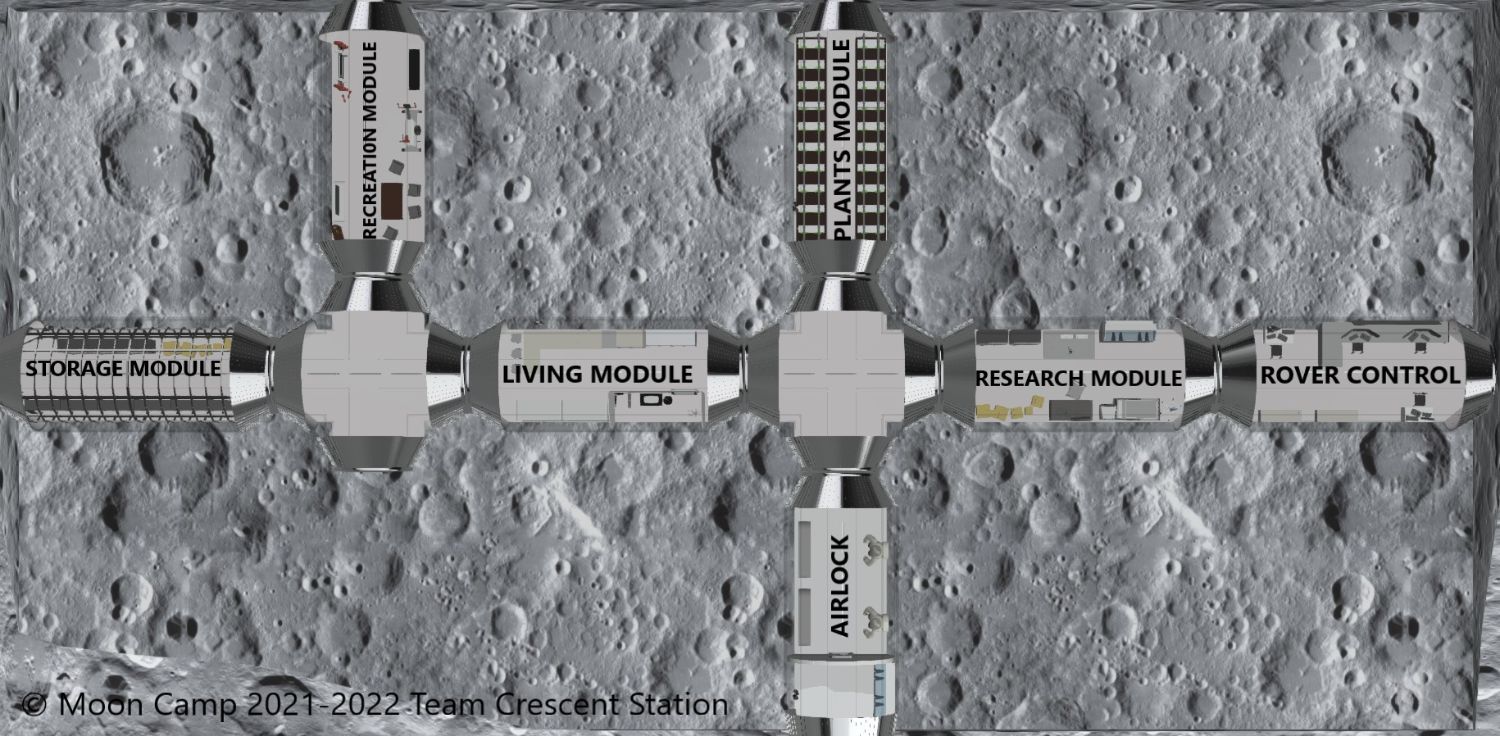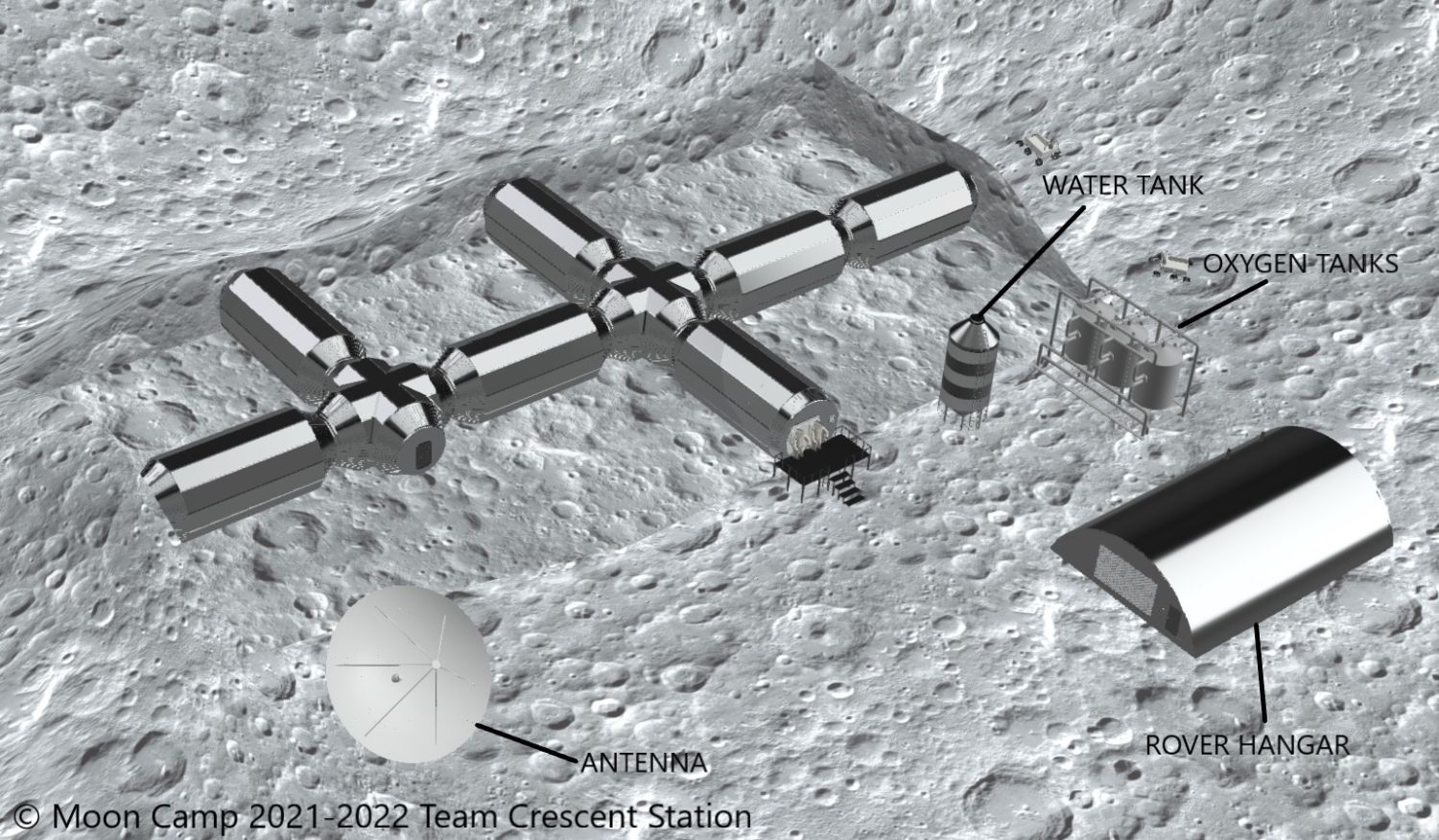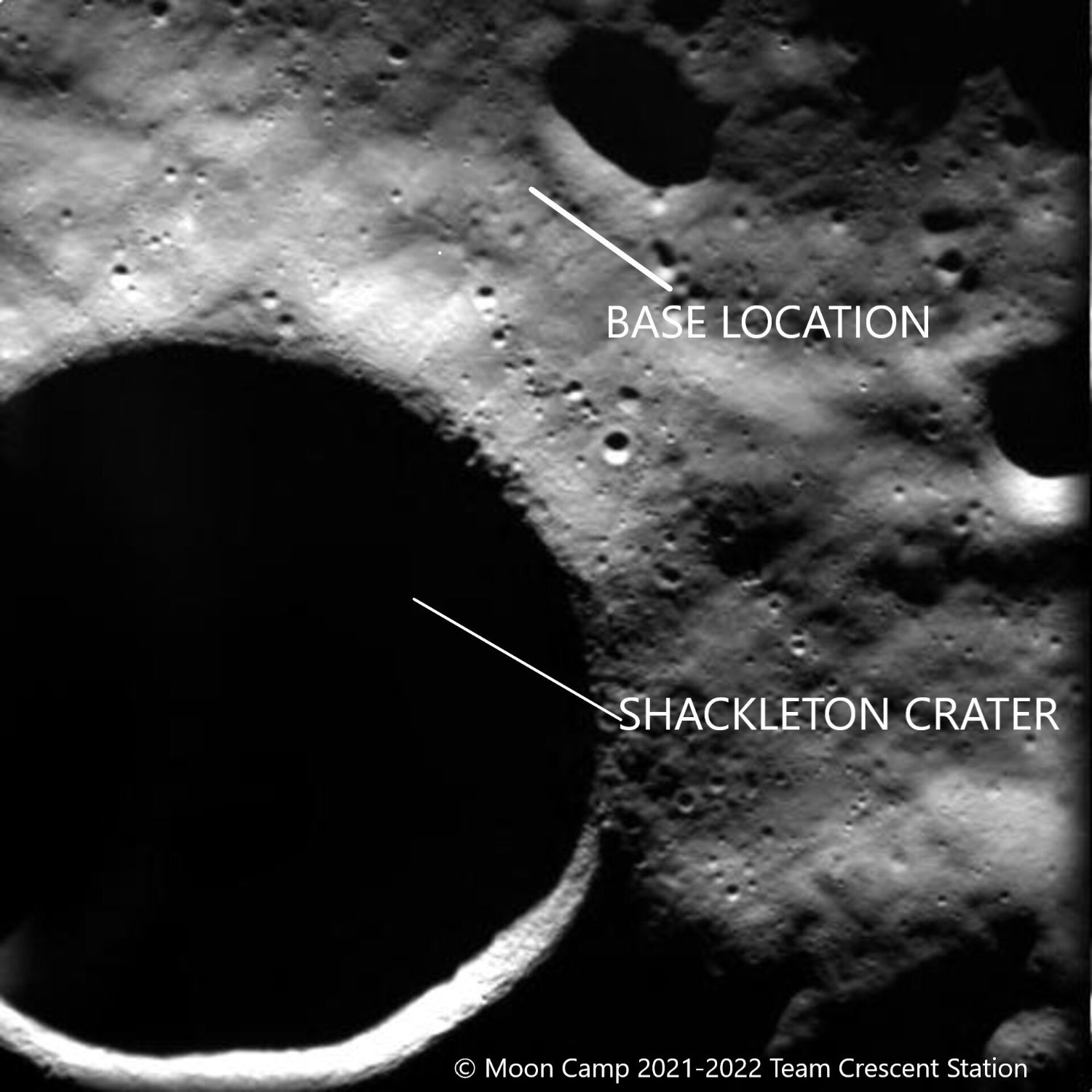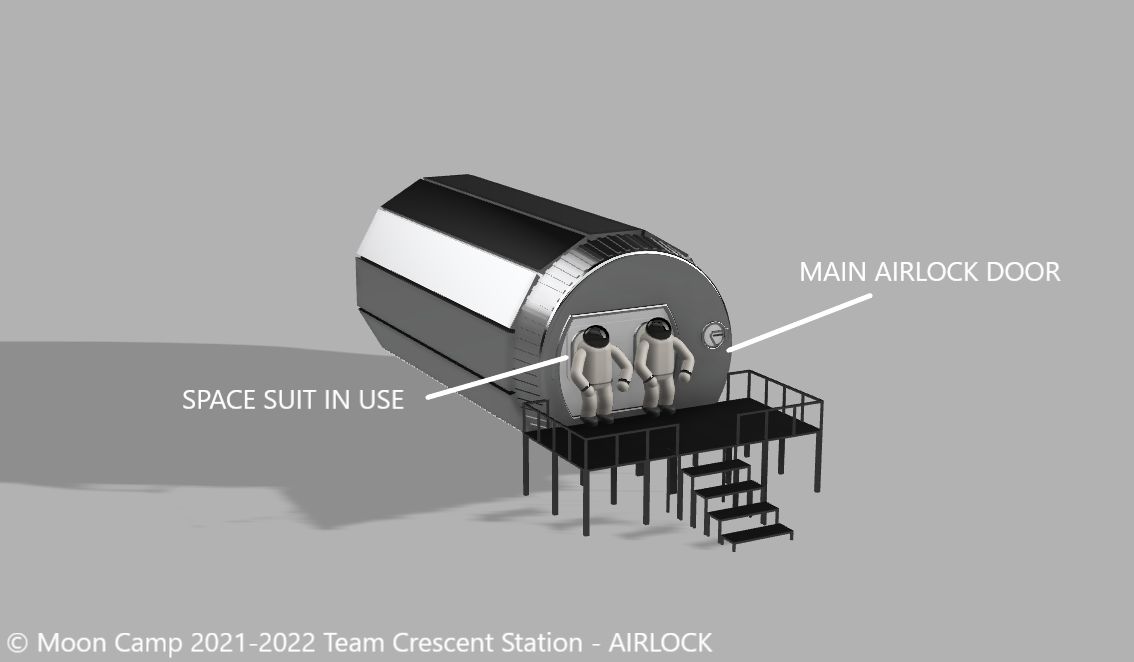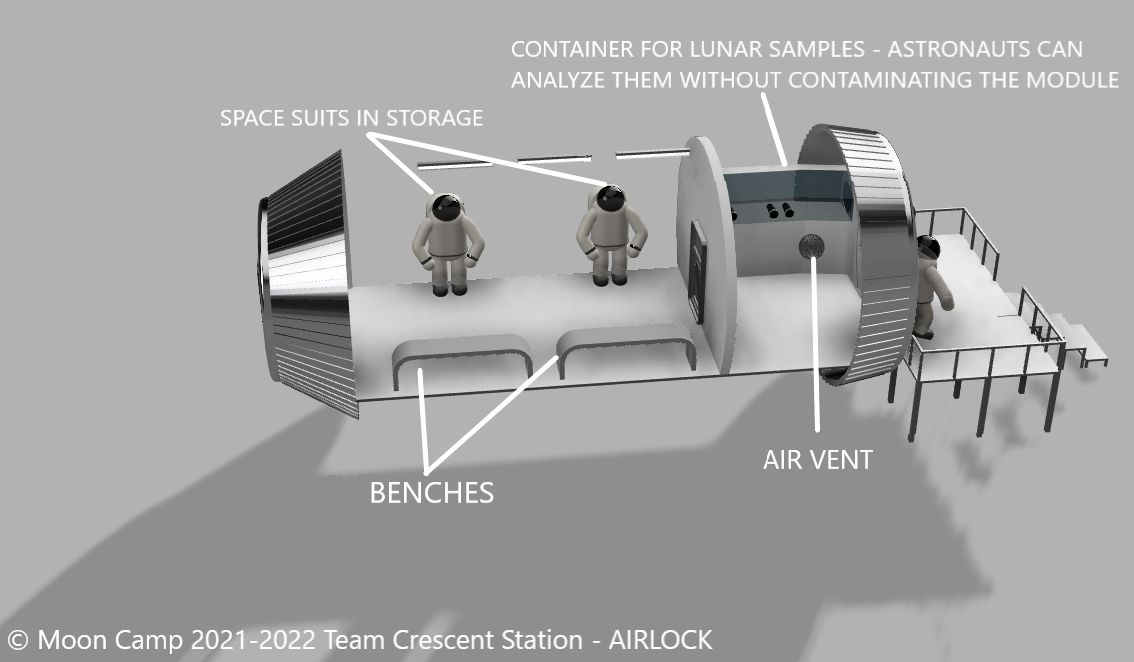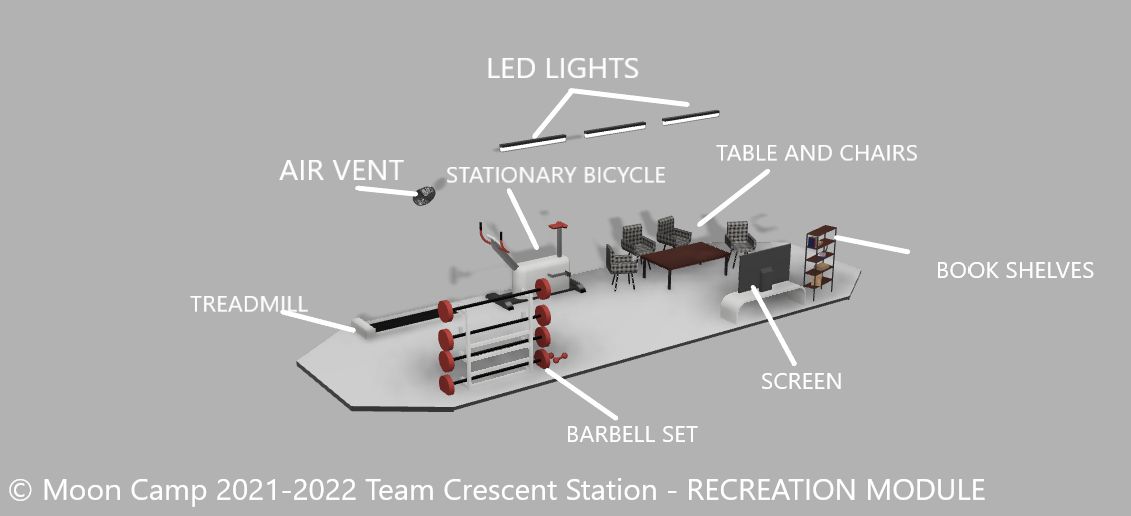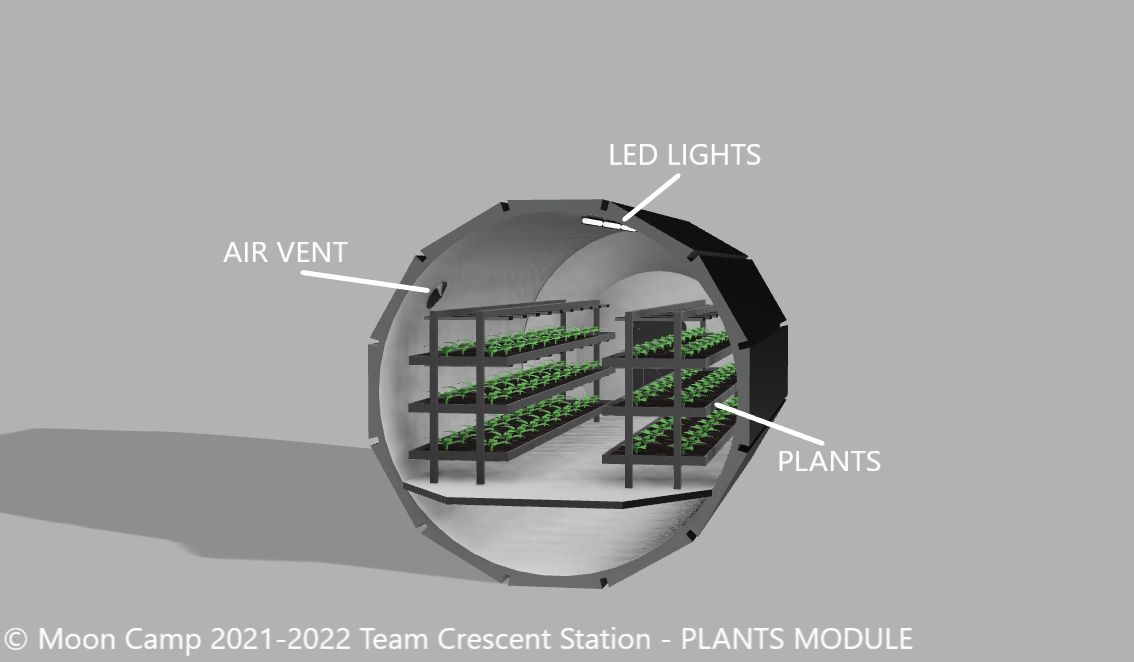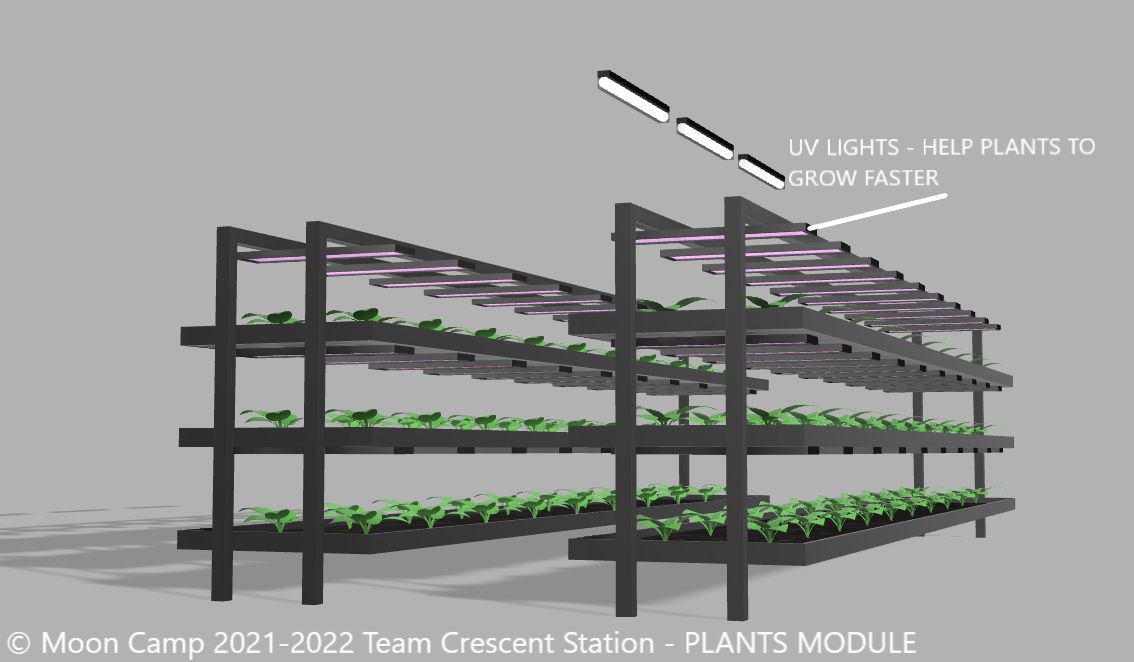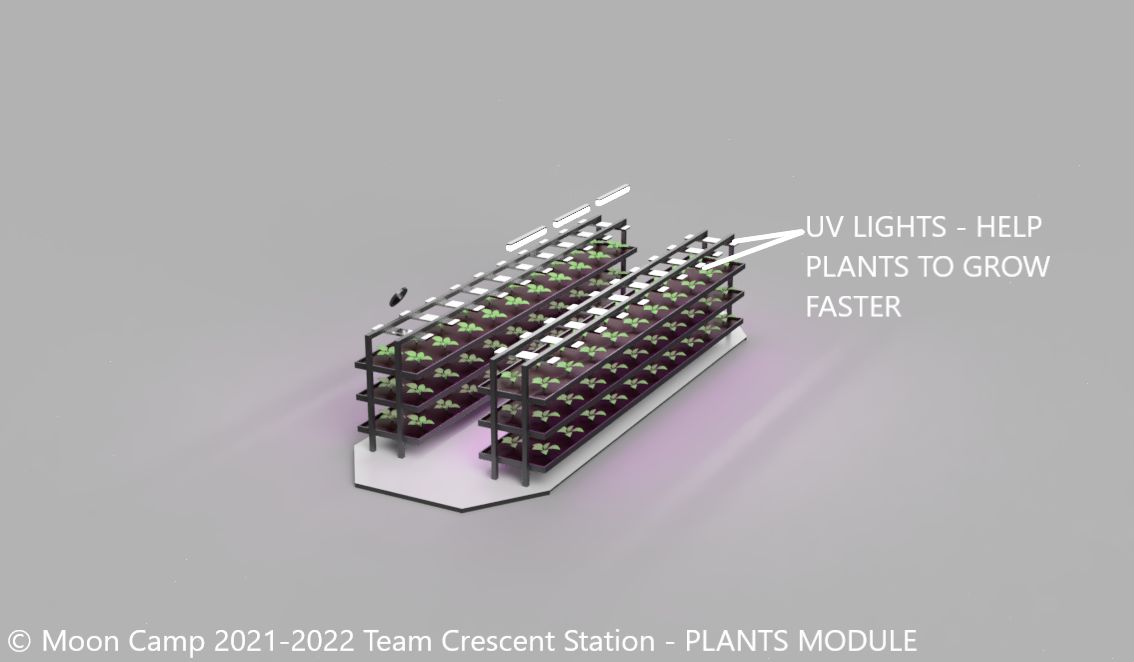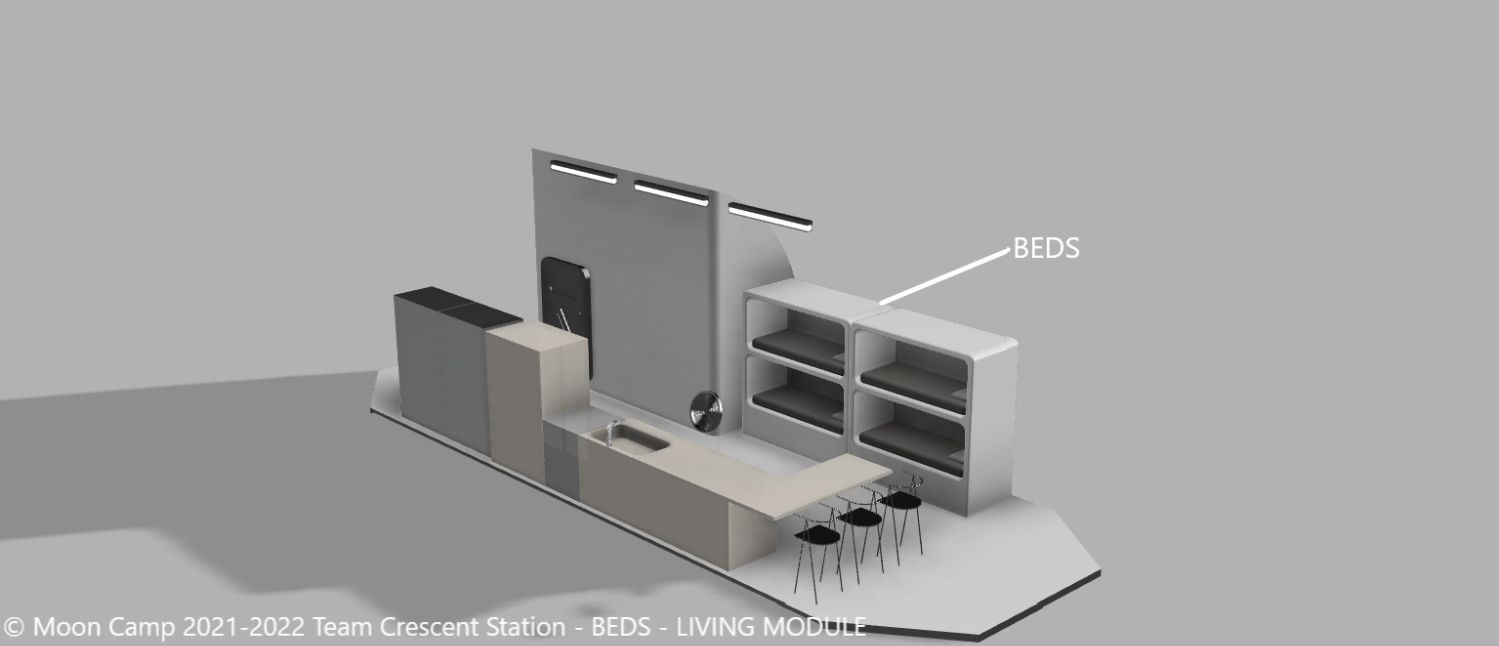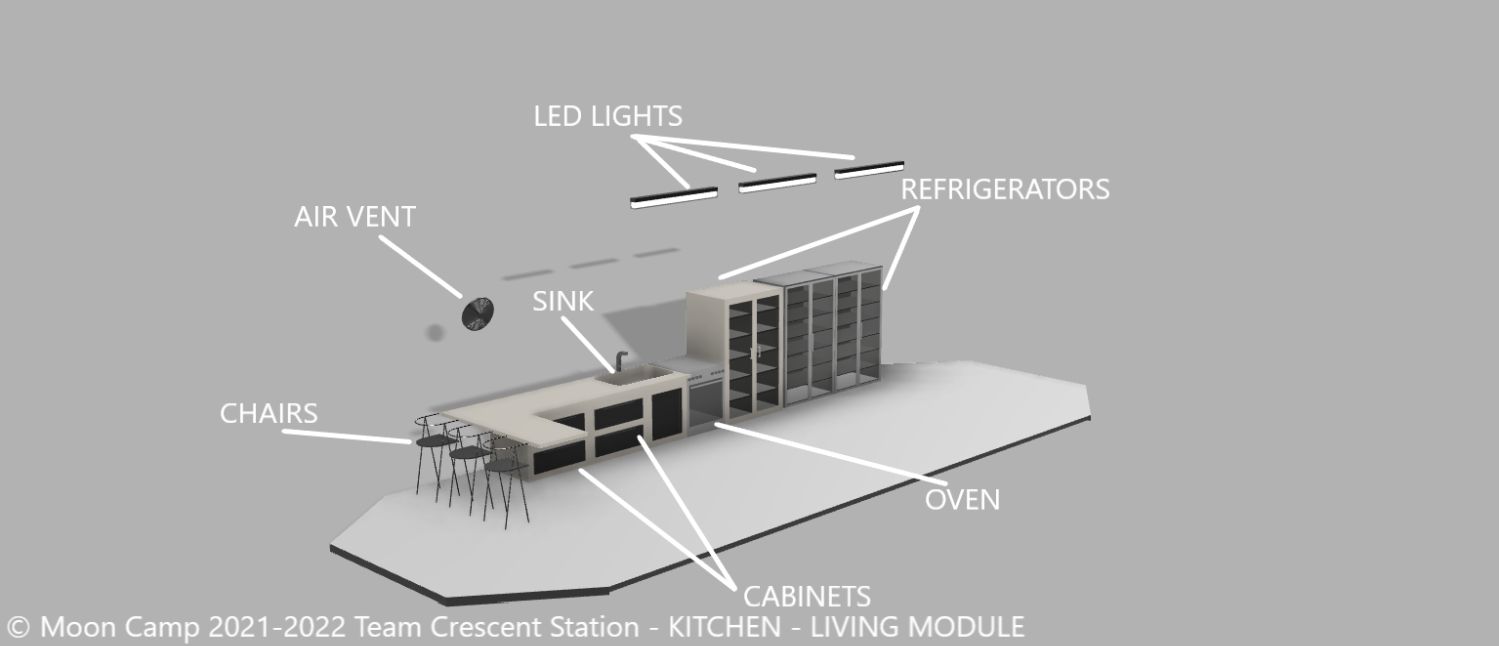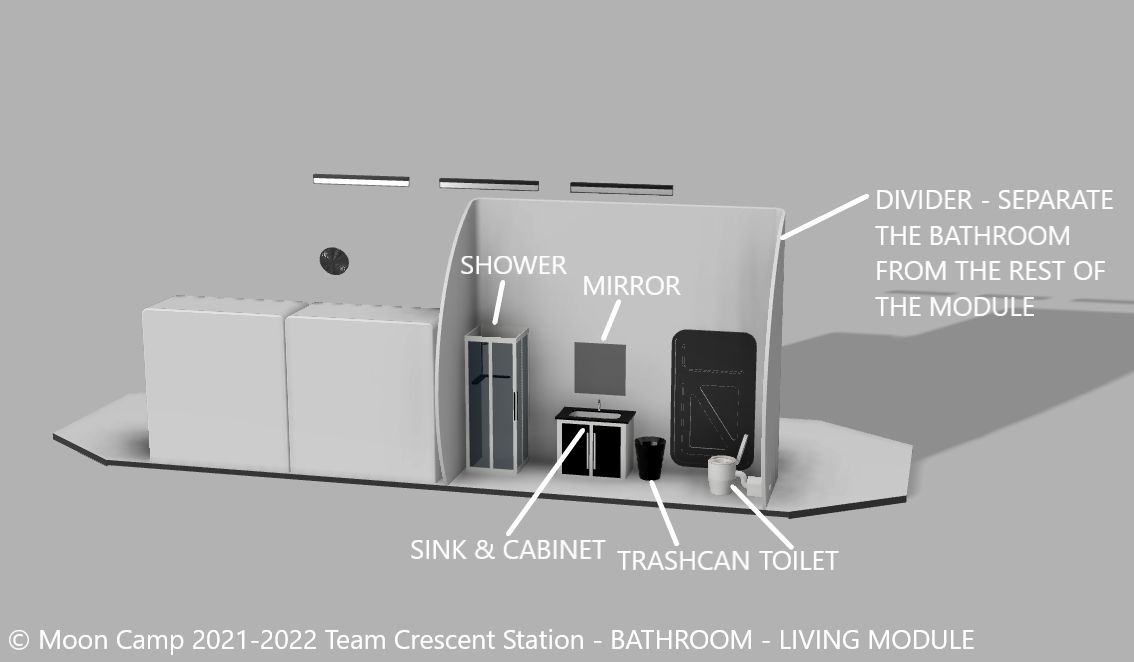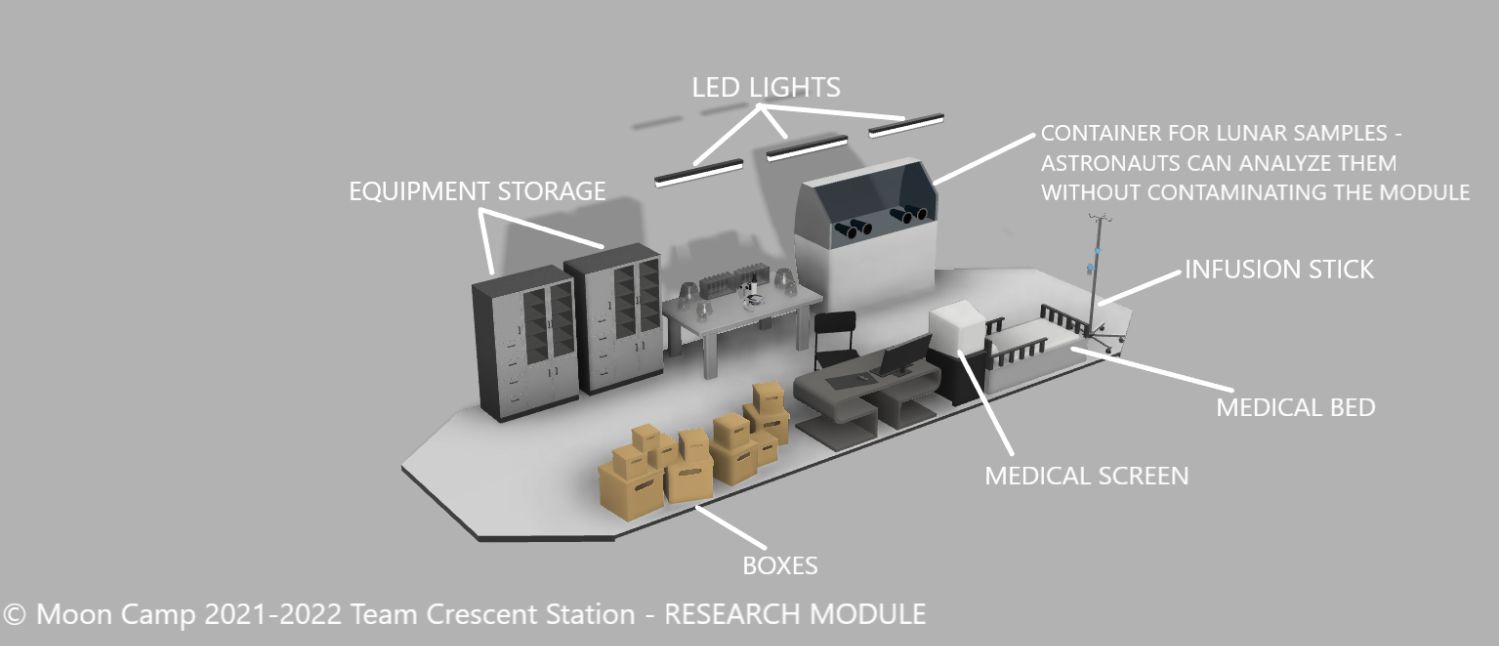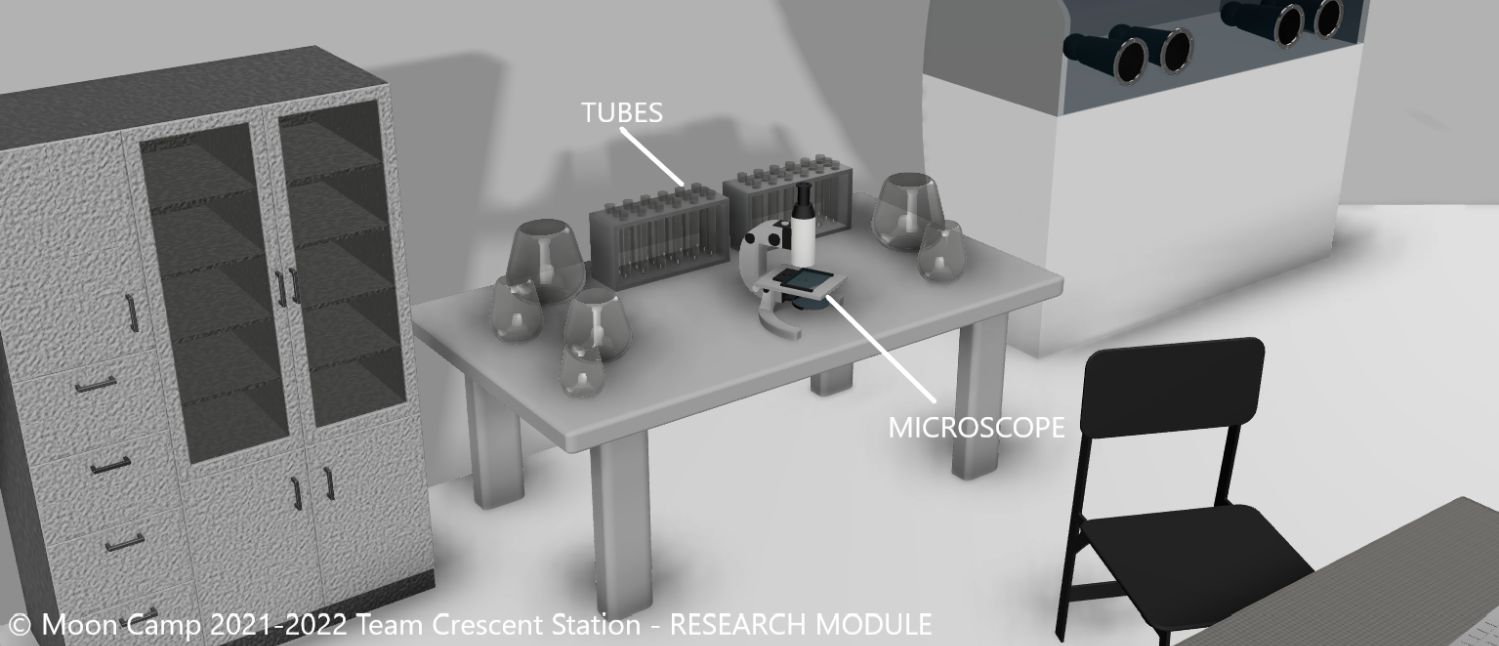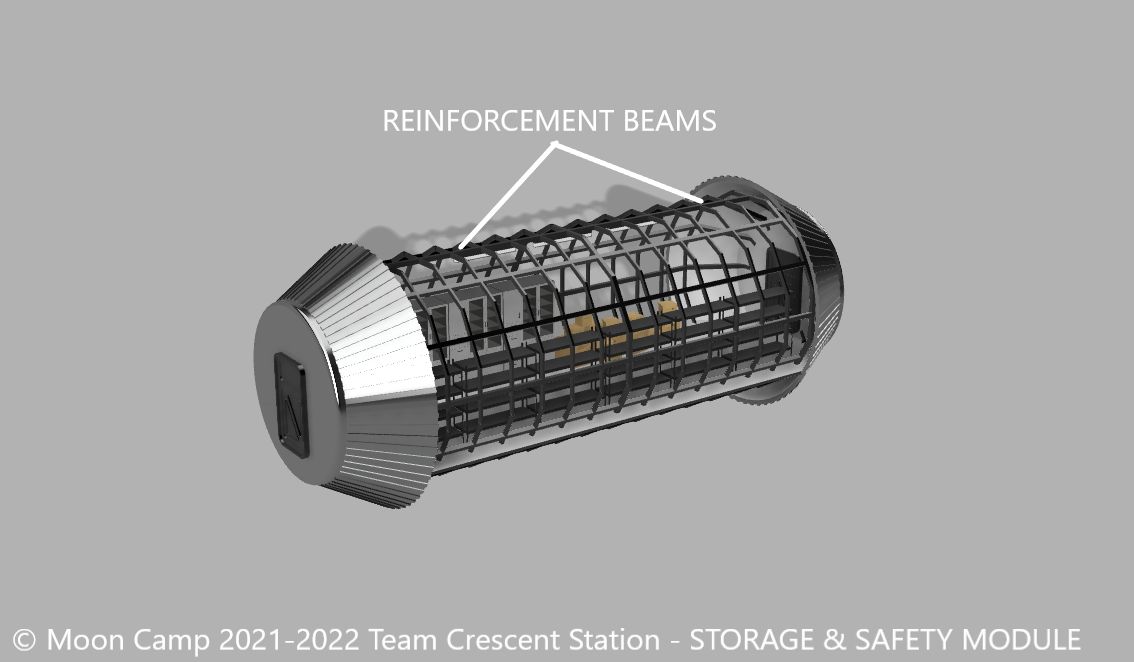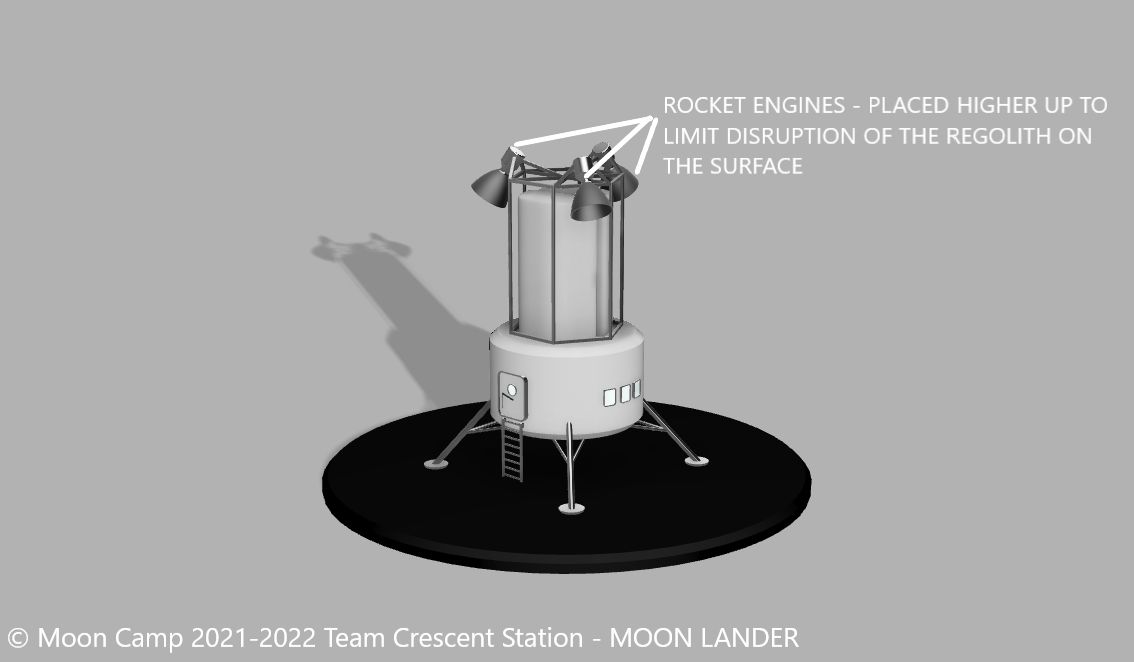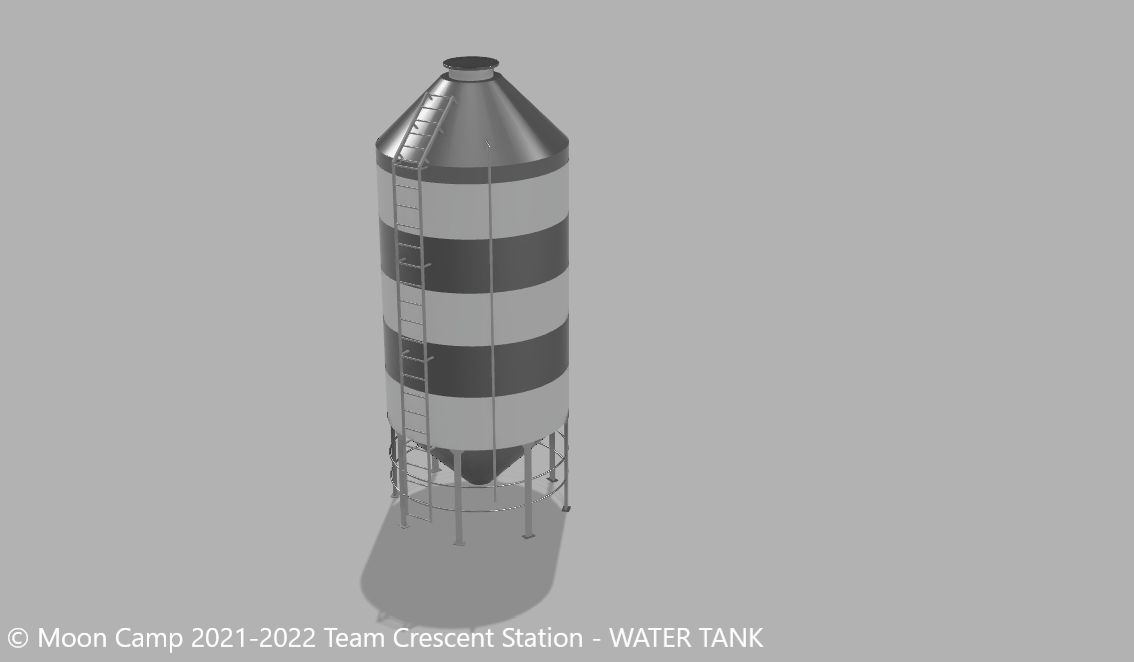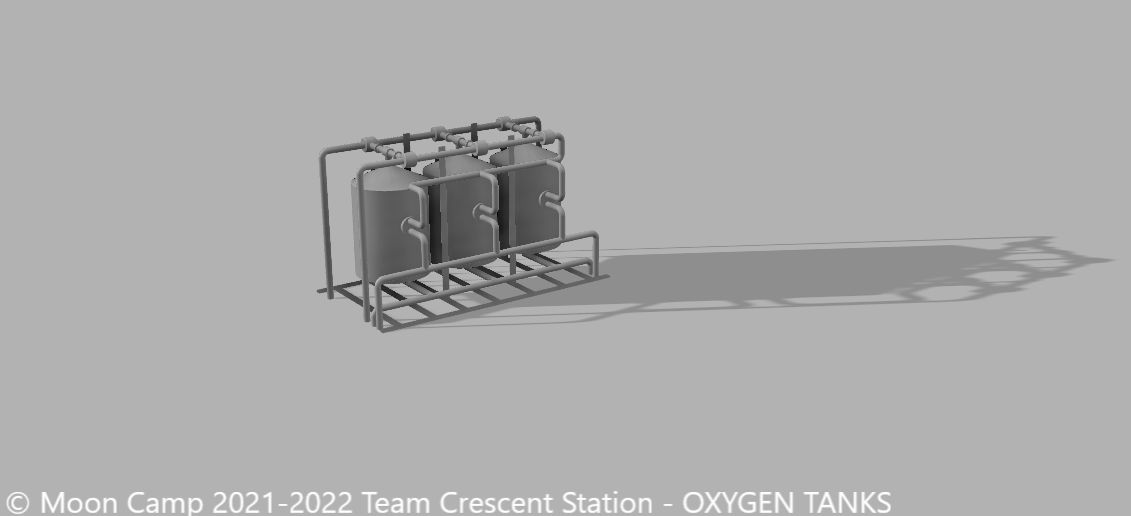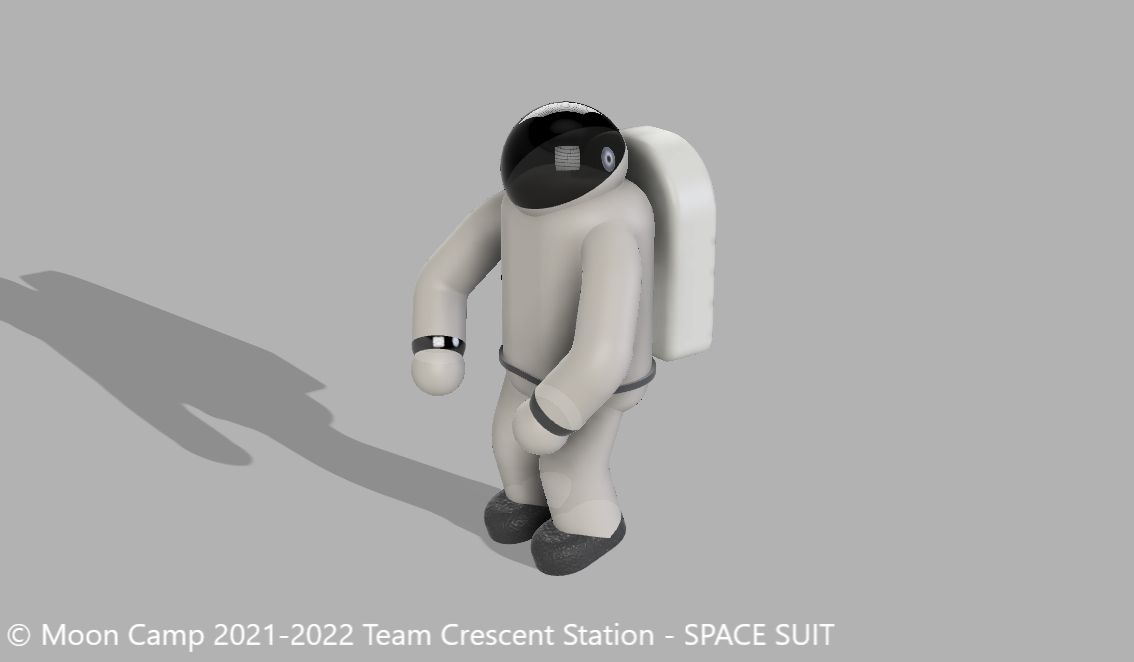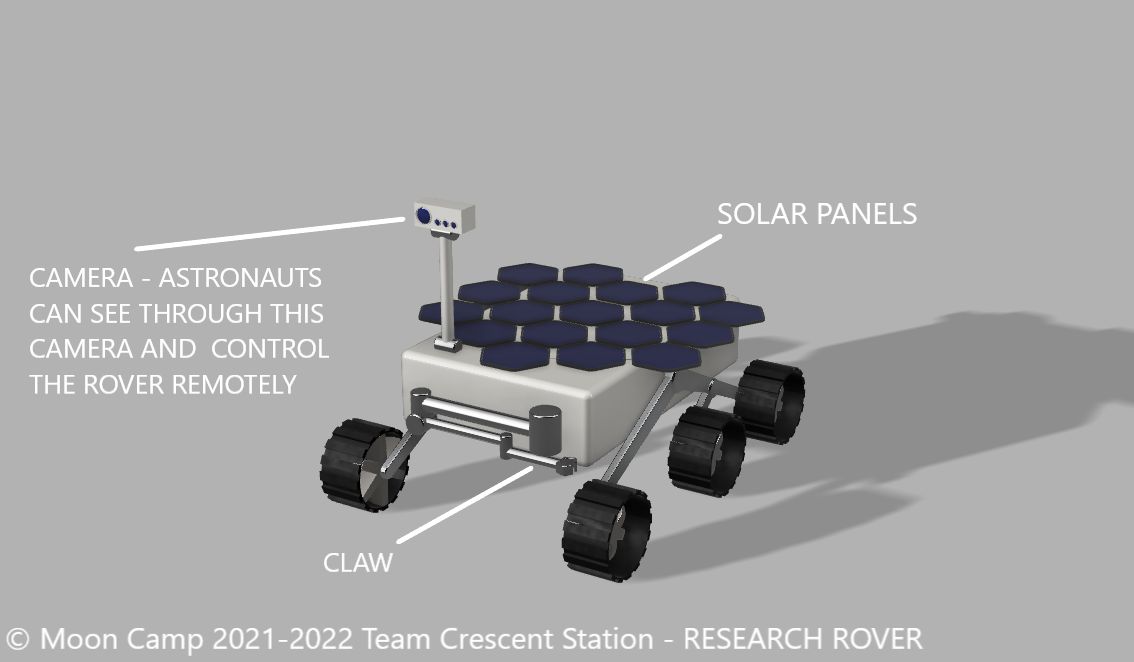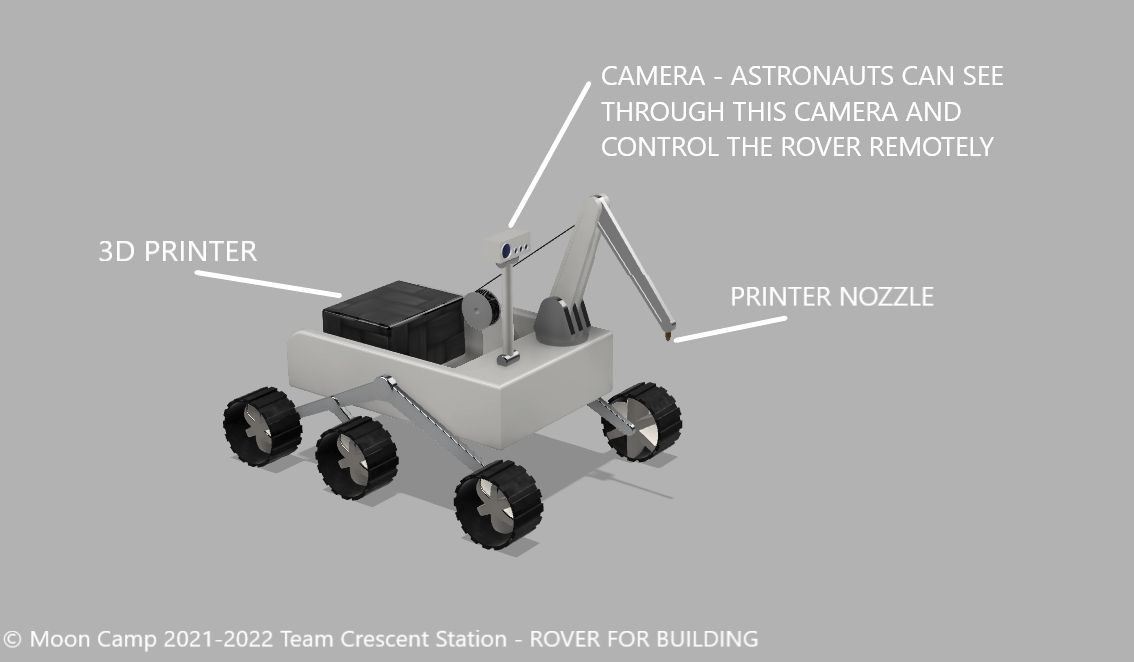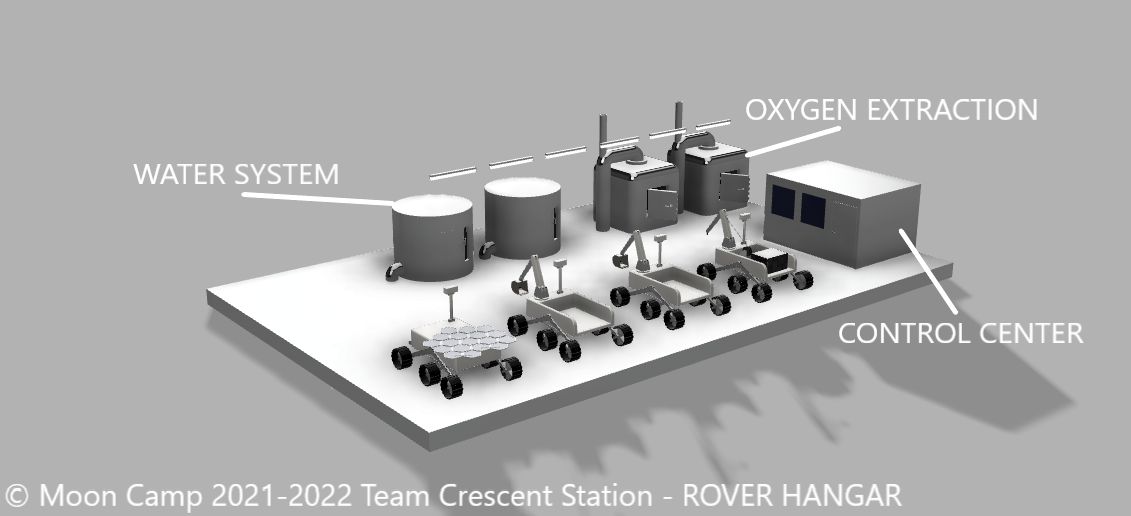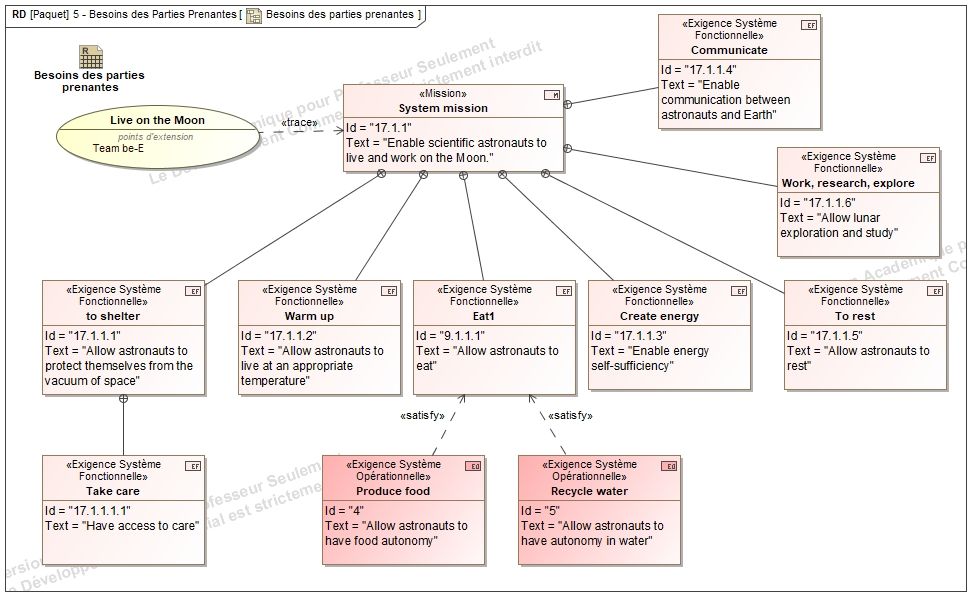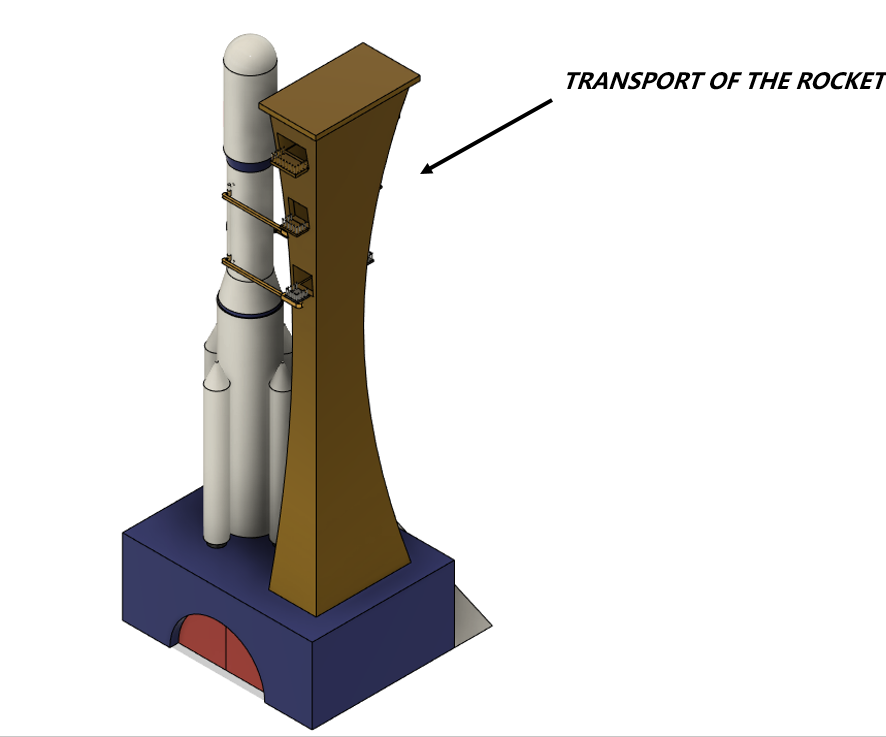Moon Camp Pioneers Gallery 2021-2022
In Moon Camp Pioneers each team’s mission is to 3D design a complete Moon Camp using Fusion 360. They also have to explain how they will use local resources, protect astronauts from the dangerous of space and describe the living and working facilities.
Team: Crescent Station
Tudor Vianu National Highschool of Computer Science Bucharest Romania 16 5 / 1
External viewer for 3d project
|
Project description
This is a project describing the design of a moon camp located in the vicinity of the Shackleton Crater. This base will be a means of future human expansion in the area, making it the first permanent settlement on the moon hosting 4 astronauts in its first phase. This will be further expanded in the future, the design offering an easy method of adding more modules. Furthermore, the modules and the tubes connecting them can be easily fabricated on Earth and brought to the Moon with current technology, making the design the perfect candidate for the first settlement on the satellite. The first phase of the base will consist of a research module, a living module, recreation module, plant module, rover control module and storage & safety module. These will be further sustained by the multiple types of rovers, the hangar equipped with a regolith processing station, water and oxygen storage, a landing platform, solar panels and antennae. The crew will be able to move freely in between the modules through the connecting tubes, being shielded by harmful radiation by a layer of regolith, however when conducting research missions and upkeep missions they will have to suit up in the dedicated airlock section of the base. This will be made up of a system that will allow samples to be properly cleaned along with the system that enables the crew to perform EVA’s without the risk of contaminating the inside of the base with fine lunar dust, by making sure the spacesuits remain outside of the base at all times. |
|||
|
2.1 Where do you want to build your Moon Camp?
We chose to build our settlement near the Shackleton Crater thanks to its proximity to the lunar pole and the chance of ice water located at its base. The settlement will however not be in the crater, being placed on its outer rim due to the outstanding property of the crater edges. Thanks to their location and height, some areas on the crater rim receive perpetual sunlight that would provide limitless energy for solar panels. Moreover, this location assures more favorable temperatures than more equatorial latitudes. These equatorial locations can experience extreme temperature fluctuations from as high as 100 degrees C to as low as –150 degrees C during the lunar night. The site has also been proposed to be turned into a huge infrared telescope due to its colder temperatures, making our settlement the perfect first phase in building such a structure. 2.2 How do you plan to build your Moon Camp? Describe the techniques, materials and your design choices.
We aim to have an expandable camp, so using as many materials from the Moon itself is important. The lunar surface contains iron, aluminum and titanium, which will be extracted using our rovers and processed. We will use these resources to build some parts and also for repairs. Also, the tubes will be made using regolith as well, since it’s stronger than cement. That being said, there is still need for some materials that we can only obtain from Earth, at least in the form that we need. The modules will be brought from Earth, but they will be covered in regolith in order to assure safety from radiation and possible impacts. Each one will be positioned with help from rovers, and sealed to another one or an airlock. The modules are cylinder shaped, with a length of 10 meters, and a diameter of about 5 meters, although the interior is smaller, most of the space that is not inhabitable is going to be used as storage space and machinery. 2.3 The environment on the Moon is very dangerous for the astronauts. Explain how your Moon Camp will protect them. (maximum 150 words)
The living quarters of the crew will be tailored to all human needs, making sure it will be an area where people can live in conditions similar to Earth. The atmosphere will be simulated using a complex system of ventilation present in each module. Radiation protection will be assured by a regolith layer printed over each of the modules using a rover equipped with a hand that can 3D print a structure. This structure will sustain its own weight, using similar technology to how 3D printers work on Earth. Using this method, the minimum amount of material will be used without compromising safety, thus greatly reducing costs. |
|||
|
2.4 Explain how your Moon Camp will provide the astronauts with:
|
Water
|
Food
|
Power
|
Air
|
|
Water is a vital resource so we paid much attention to this topic. Our main idea is that astronauts can remove water ice from the nearby craters to assure survival on the moon. Research rovers will be sent out to carry out this mission, using a powerful tool to dig through the lunar soil and extract ice crystals which will be then brought back to the base. The collected water will be melted and filtered from other particles, rendering it useful for drinking and agricultural practices. We intend to perform this process multiple times a week and collect the remaining water in the base’s water storage. |
Food is also a necessity for our crew; therefore, we carefully considered all options for creating a pleasant environment for the astronauts. To ensure life in the first month we will ship food from Earth, however in the early stages of construction the food module will be installed in order to achieve full autonomy from Earth’s shipments by the time astronauts arrive. Plants will be grown in similar conditions to the so called “vertical farms” on Earth, the crops chosen including potatoes, tomatoes, celery, beans, and lettuce. These plants are rich in vitamin A, vitamin C, potassium, protein, and calcium, all of them combined being enough to provide our astronauts with all of the nutrients they require. We will also use UV lights in the greenhouse to help the plant grow faster, removing the light wavelengths that do not facilitate growth. |
Thanks to its location on the rim of Shackleton Crater, our moon camp will receive almost constant sunlight. We will harness this power with the use of a solar panel field and store the generated electricity in hydrogen fuel cells, more efficient than conventional lithium-ion batteries, for use during the lunar night or in the event of emergencies. While charging, the fuel cells separate the oxygen and hydrogen from water molecules through electrolysis. These are later recombined releasing most of the input energy. |
Our moon camp will have an earth-like atmosphere composed of approximately 21% oxygen. Gas concentrations within all pressurized modules will be tightly maintained by the life support system which will continuously recycle the CO2 in the air. A large portion of this task will be handled within the plant module where oxygen will be produced through photosynthesis. Thus, a constant flow of CO2 rich air will be fed over the plant racks ensuring maximum efficiency for the conversion to oxygen. In order to ensure the required gas production, additional oxygen will be obtained from the lunar regolith through molten salt electrolysis. Moreover, this process also generates useful metal alloys as a byproduct, which could be used in future expansions of the settlement. |
|
2.5 Explain what would be the main purpose of your Moon Camp.
In its early stages, our moon camp will have a solely scientific purpose, with a focus towards establishing a permanent human presence on the Moon. That being said, we have designed our settlement to allow for almost infinite expansion which will eventually also host tourists and allow for the pursuit of commercial goals in tandem with scientific ones. In its first years the camp will serve as a Moon surface scouting base and a means of building the infrared telescope in the Shackleton crater. Our settlement’s primary scientific mission will be the first hand study of the lunar surface and its geology, giving us valuable insight into the formation of Earth’s natural satellite. Secondary purposes will include investigating the feasibility of new lunar industries, such as mining and tourism, establishing the first telescopes on the Moon and improving the cost, safety and efficiency of interplanetary travel. |
|||
|
3.1 Describe a day on the Moon for your Moon Camp astronaut crew.
In order to maximize the scientific output of our moon camp, the settlement should be active 24/7. To achieve this, the crew will be split up into teams of 4 people who will be housed in the same living module. Each team will work a 12-hour shift offset in such a way that they cover 24 hours. Thus, while some crewmembers are working, others will be sleeping or enjoying their free time. No matter the shift, each astronaut will start their day by doing their hygiene, eating breakfast, and doing a quick workout. Next, crew members will receive their tasks from ground control. While most tasks will be performed inside the safety of the settlement, astronauts will also have to go outside for repairs or sample collecting missions. However, because of the high risks and necessary training to perform EVAs, these activities will be quite rare. At the end of their 12-hour shifts, each settler will have 4 hours of free time which they can use to talk to their families or for team building activities. This will also be the time when dinner will be served, an important activity for the crew to get together and socialize. Although there is gravity on the Moon, it is much weaker than that of Earth, so muscle atrophy and loss of bone density are still serious threats to human health. To remedy this, before ending their day, astronauts will also have to work out for at least an hour on a strap on treadmill and lift weights. Since our moon base is quite large, and the teams quite small, astronauts will likely have to spend most of their working hours without much human contact. This, coupled with a tight schedule and the stress of living in an extreme environment can lead to serious mental health issues which would hinder the crew’s abilities. Thus, morale will be kept high and team bonds will be further strengthened by organizing daily group activities during free time, such as watching movies or playing board games. At the end of their day, the astronauts will have 8 hours to sleep in order to be as rested as possible the next day. |
|||



